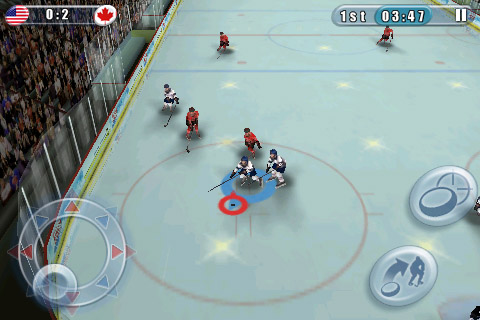Ice hockey is played on a hockey rink. During normal play, there are six players per side on the ice at any time, one of them being the goaltender, each of whom is on ice skates. The objective of the game is to score goals by shooting a hard vulcanized rubber disc, the puck, into the opponent's goal net, which is placed at the opposite end of the rink. The players may control the puck using a long stick with a blade that is commonly curved at one end.
Players may also redirect the puck with any part of their bodies, subject to certain restrictions. Players may not hold the puck in their hand and are prohibited from using their hands to pass the puck to their teammates, unless they are in the defensive zone. Players are also prohibited from kicking the puck into the opponent's goal, though unintentional redirections off the skate are permitted. Players may not intentionally bat the puck into the net with their hands.
Hockey is an "offside" game, meaning that forward passes are allowed, unlike in rugby. Before the 1930s hockey was an onside game, meaning that only backward passes were allowed. Those rules favored individual stick-handling as a key means of driving the puck forward. With the arrival of offside rules, the forward pass transformed hockey into a truly team sport, where individual performance diminished in importance relative to team play, which could now be coordinated over the entire surface of the ice as opposed to merely rearward players.[38]
The five players other than the goaltender are typically divided into three forwards and two defensemen. The forward positions consist of a centre and two wingers: a left wing and a right wing. Forwards often play together as units or lines, with the same three forwards always playing together. The defencemen usually stay together as a pair generally divided between left and right. Left and right side wingers or defencemen are generally positioned as such, based on the side on which they carry their stick. A substitution of an entire unit at once is called a line change. Teams typically employ alternate sets of forward lines and defensive pairings when shorthanded or on a power play. Substitutions are permitted at any time during the course of the game, although during a stoppage of play the home team is permitted the final change. When players are substituted during play, it is called changing on the fly. A new NHL rule added in the 2005–2006 season prevents a team from changing their line after they ice the puck.

No comments:
Post a Comment